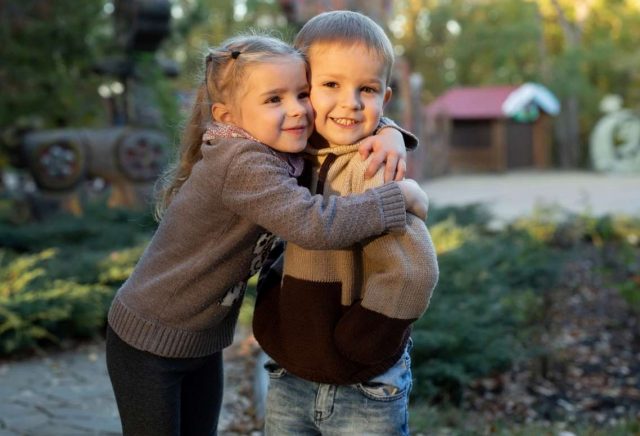Introduction
Social-emotional development is crucial to a child’s growth and development, profoundly impacting their future academic and social success. As parents or educators, it’s our responsibility to create an environment that nurtures a child’s social and emotional well-being, as it lays the foundation for their lifelong learning and growth.
The following article will explore practical strategies parents and educators can use to support social-emotional development in early childhood. Whether you’re a parent or an educator, consider exploring these practical ways to raise resilient kids and support their social-emotional development in various settings; for example, in homes and accessible childcare facilities.
The Power of Words
The words we choose and how we use them can shape how children perceive themselves, others, and the world around them. Power words are words that have a positive impact on a child’s emotional and social development.
They are words that empower, encourage, and validate a child’s experiences and feelings. Using power words with children can help them develop a positive self-image, improve communication skills, and promote a healthy sense of self-worth.
Examples of power words include “brave,” “confident,” “kind,” “strong,” and “loved.” Parents and educators can use these words to describe a child’s behavior, personality, and accomplishments. For example, “I am so proud of you for being brave and trying something new!”
By using these words regularly, children learn to internalize positive self-talk, which can help build resilience and improve a growth mindset. Additionally, using power words can help children develop empathy and understanding toward others as they learn to recognize and acknowledge positive qualities in others.(1)
Behavior and Consequences
Children need structure and consistency to feel secure and develop a sense of responsibility. It is equally important to teach children about positive and negative consequences in relation to their behavior.
For children, consequences are a natural part of learning and development. Positive consequences, such as praise and rewards, reinforce positive behaviors and encourage children to continue making good choices. Negative consequences, such as a time-out or loss of privileges, discourage negative behaviors and help children understand the impact of their actions on themselves and others.
Adopt a neutral tone and avoid using harsh or judgmental language that can create power struggles and a negative atmosphere. Instead, calmly explain the possible results of behavioral actions and why it is important to make good choices. By separating the behavior from children, you can help them understand that they are not bad, but their behavior needs to change.
Demonstrating While Communicating
Demonstrating while communicating is an approach that uses physical gestures and actions to accompany verbal communication. For instance, a teacher or parent might use hand gestures, facial expressions, or body language to complement their verbal communication. This technique helps children understand the intended message or instruction better.
Positive language is essential when demonstrating while communicating. It helps to reinforce the message and also promotes a positive atmosphere. Parents and teachers can use positive phrases such as “I like how you are listening” or “Great job following the directions” while demonstrating.
Visual aids such as pictures, diagrams, or videos can also be beneficial when demonstrating while communicating. Visual aids help reinforce the message and make it easier for children to understand. For instance, a teacher might use a picture of a person sharing to demonstrate how to share it with others.
Establishing “Little Rules”
“Little rules” focus on small, specific behaviors or actions we want to encourage in children. Unlike “big rules,” which are more general and challenging for children to understand, “little rules” are more specific and easier to follow. These rules are framed positively, highlighting what children can do rather than what they cannot do.
Here are some examples of big rules and corresponding little rules:
Big Rule: Be respectful to others.
Little Rule: Use kind words when speaking to others.
Big Rule: Keep your hands to yourself.
Little Rule: Use gentle hands when touching others.
Big Rule: Clean up after yourself.
Little Rule: Put toys back where you found them after playing.
Framing rules positively reinforce desired behavior rather than punishing undesired behavior. Instead of saying, “Don’t run in the hallway,” “Walk quietly in the hallway” gives children a clear and concise expectation of the ideal behavior. This approach also helps to reinforce a positive attitude in children and encourages them to engage in more positive behaviors.
It’s important to reinforce “little rules” by providing positive feedback when children follow them. This could be in the form of praise, a high five, or a sticker on a chart. Positive feedback reinforces that following the “little rules” is important and desirable.
Active and Empathetic Listening
As an educator or parent, being an active and empathetic listener to children is an essential skill set. Active listening is fully concentrating, understanding, and responding to the child’s words. Empathetic listening takes it one step further, where the listener strives to understand the child’s feelings and perspective.
Active and empathetic listening creates an environment of trust and safety where children feel heard and understood. When children feel seen and heard, they are more likely to express themselves and share their feelings, which is critical to their social and emotional development.
One way to practice active and empathetic listening is to provide physical cues that show you are engaged and listening. This can include eye contact, nodding, and verbal affirmations. Reflecting on what the child has said in your own words can also demonstrate active listening and help clarify misunderstandings.
Empathetic listening involves going beyond acknowledging the child’s words to understanding their feelings and perspective. This can be done by asking open-ended questions encouraging the child to express themselves, such as “How did that make you feel?” or “Can you tell me more about that?” (2)
Conclusion
As parents and educators, we are responsible for prioritizing the development of these essential skills in our children. It can be challenging to implement these strategies consistently, but the results are well worth the effort. Using these strategies, we can help children build resilience and develop social and emotional skills to serve them well.
It is essential to remember that every child is different, and what works for one child may not work for another. It is crucial to remain flexible and adaptable in our approach. By working together, we can ensure that our children grow up healthy, happy, and emotionally resilient adults.




